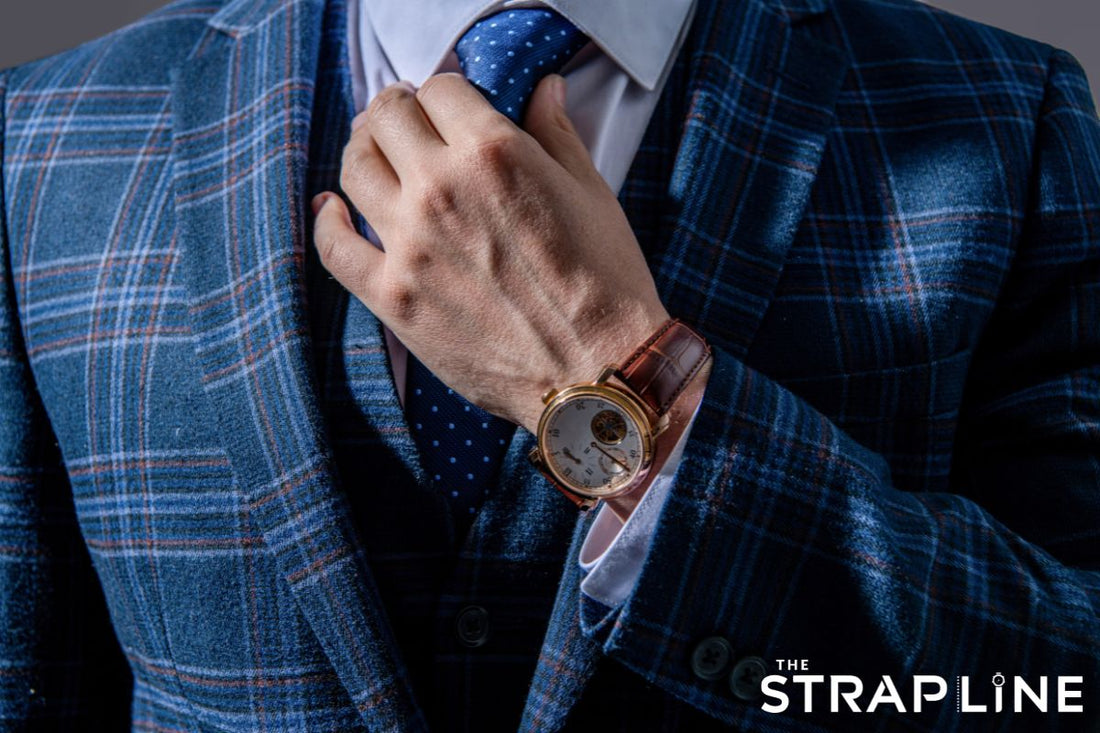
What Size Watch Strap Do I Need?
Share
Understanding Watch Strap Sizes
When it comes to selecting the right watch strap, two key measurements are crucial: strap width and strap length.
Strap Width
The width of your watch strap is determined by the lug width of your watch. The lugs are the small protrusions on either side of the watch case where the strap is attached. Common lug widths include 18mm, 20mm, and 22mm, though they can vary depending on the watch. Ensuring that your strap matches the lug width is vital for a secure and aesthetically pleasing fit. You can measure this yourself using a ruler, but it's best to check the manufacturer's website to be sure.
Strap Length
The length of your watch strap depends on the circumference of your wrist. Straps typically come in short, standard, and long lengths, accommodating different wrist sizes. Choosing the correct length ensures that your watch sits comfortably on your wrist without excessive overlap, a loose fit, or the end of the strap sticking out past your wrist.
How to Measure Your Wrist for a Watch Strap
To determine the correct watch strap size, you’ll need to measure your wrist accurately. Here’s how to do it:
Tools You'll Need
- A flexible measuring tape, ruler, or a piece of string.
- A pen or pencil (if using string).
Step-by-Step Measurement Guide
- Wrap the measuring tape or string snugly around your wrist, just below the wrist bone where you would normally wear your watch.
- Mark the point where the tape or string overlaps.
- Measure the length against a ruler if you used string.
Now that you have your wrist measurement, you can use the following general guidelines to determine the correct strap length:
- Wrist circumference of 14-16cm: Strap length of 105/65mm (short).
- Wrist circumference of 16-18cm: Strap length of 115/75mm (standard).
- Wrist circumference of 18-20cm: Strap length of 125/85mm (long).
Remember, the strap length is usually given as two measurements—one for the longer part of the strap with holes and one for the shorter part attached to the buckle.
Factors to Consider When Choosing a Watch Strap Size
Several factors come into play when selecting the ideal watch strap size:
Watch Case Size
The diameter and thickness of your watch case should influence your strap choice. Generally, larger watches require wider straps to maintain balance and proportion, while smaller watches pair better with narrower straps.
Material of the Strap
The material of the strap can also affect the fit. Leather straps, for instance, tend to stretch slightly over time, while metal bracelets can be adjusted by adding or removing links. Rubber straps offer flexibility and are great for sports watches, and NATO/nylon straps provide a casual, adjustable option that fits most wrist sizes comfortably.
Style and Personal Preference
Finally, your personal style plays a significant role. If you prefer a snug fit, you might opt for a shorter strap. For a more relaxed look, a longer strap might be more suitable. Also, consider the context—formal settings often call for thinner, more elegant straps, while casual or sporty environments allow for wider, chunkier straps.
Common Mistakes to Avoid
When selecting a watch strap, it’s easy to make a few common mistakes:
Ignoring Lug Width
Always ensure that the strap width matches the lug width of your watch. A mismatch can lead to an insecure fit or a strap that doesn't sit flush with the watch case, disrupting the watch's overall appearance.
Choosing the Wrong Length
A strap that's too long will result in excessive overlap, while one that's too short may be uncomfortable or difficult to buckle. You don't want the buckle to sit uncomfortably against one side of your wrist, digging into the bones of your arm. The buckle should ideally sit dead centre against the underside of your wrist. Measuring your wrist accurately and adjusting the buckle (e.g. for butterfly clasps) is key to avoiding this mistake.
Overlooking Material Considerations: Different strap materials behave differently. For example, leather may stretch over time, and metal may require periodic adjustments as your wrist swells or contracts in warm or cold weather. Choose a material that not only fits well but also suits your lifestyle and the intended use of your watch.
FAQs on Watch Strap Sizes
Can I use a strap that's slightly wider or narrower than the lug width?
It’s best to match the strap width exactly to the lug width. A strap that's too wide won’t fit, and one that's too narrow will move around, potentially damaging the watch or exposing the spring bars, which nobody needs to see.
How do I adjust a metal bracelet strap?
Metal bracelet straps can usually be adjusted by removing or adding links. This is often best done by a professional to avoid damaging the strap.
What if my wrist size falls between two standard lengths?
If you're between sizes, opt for the shorter strap if you prefer a tighter fit, or the longer strap if you prefer a looser fit.
Are there universal straps that fit any watch?
Some NATO and Velcro straps are designed to be more universal, fitting a wide range of wrist sizes due to their adjustable nature.
Final Thoughts
Choosing the right watch strap size is essential for both comfort and style. By understanding strap width, length, and the factors that influence these dimensions, you can ensure that your watch fits perfectly and looks great. Take the time to measure your wrist, consider your watch case size, and think about your personal style before making a choice.
Additional Resources
- Check out our guide to changing your watch strap.
